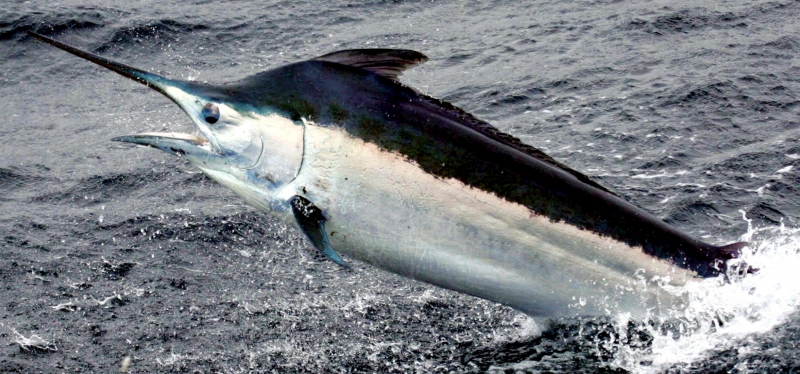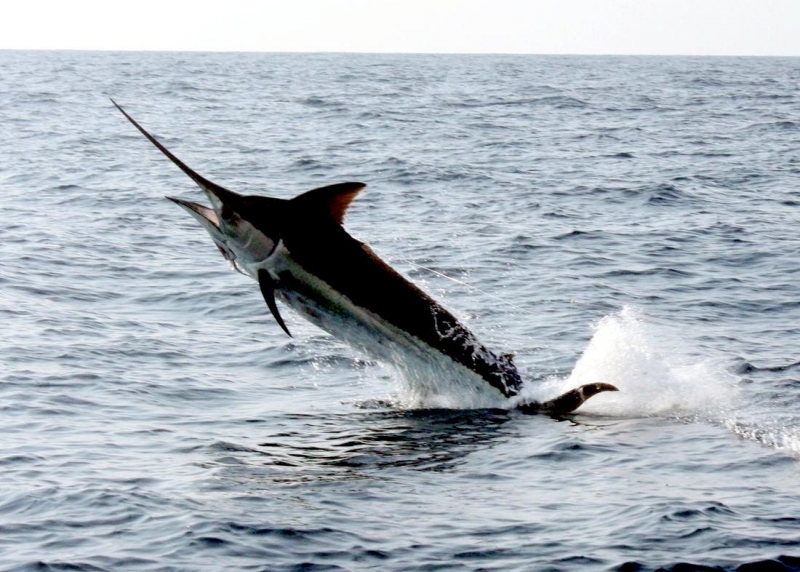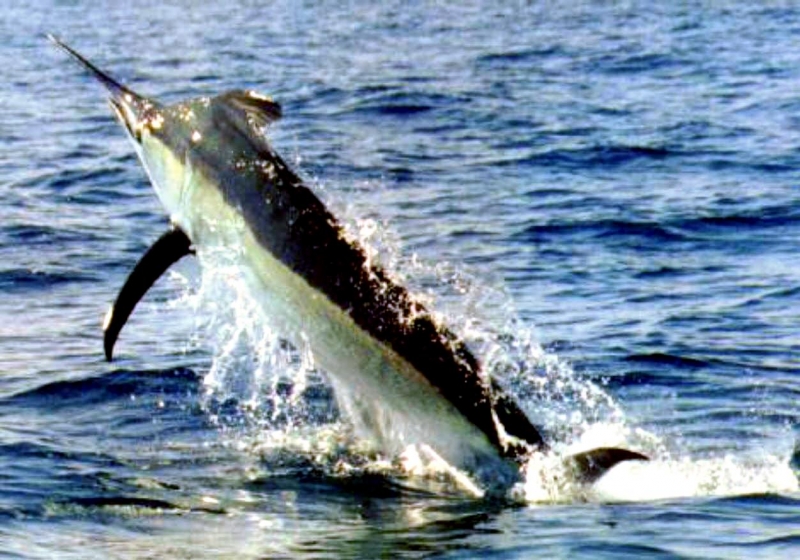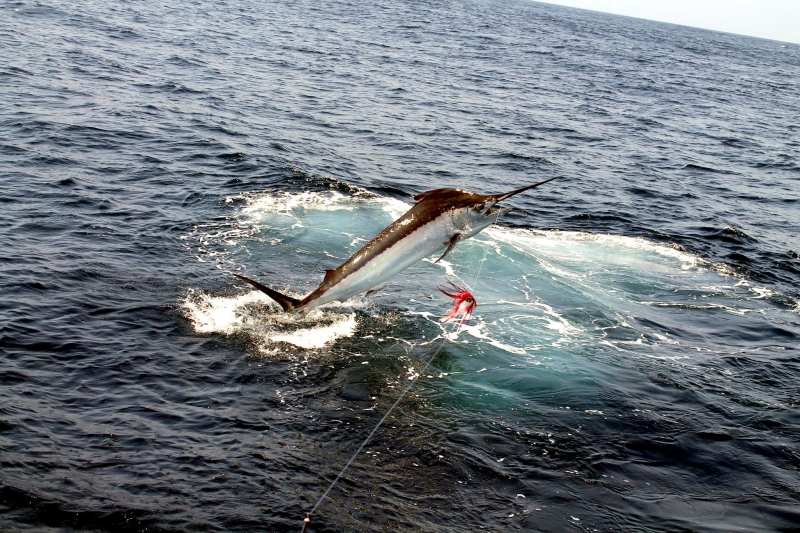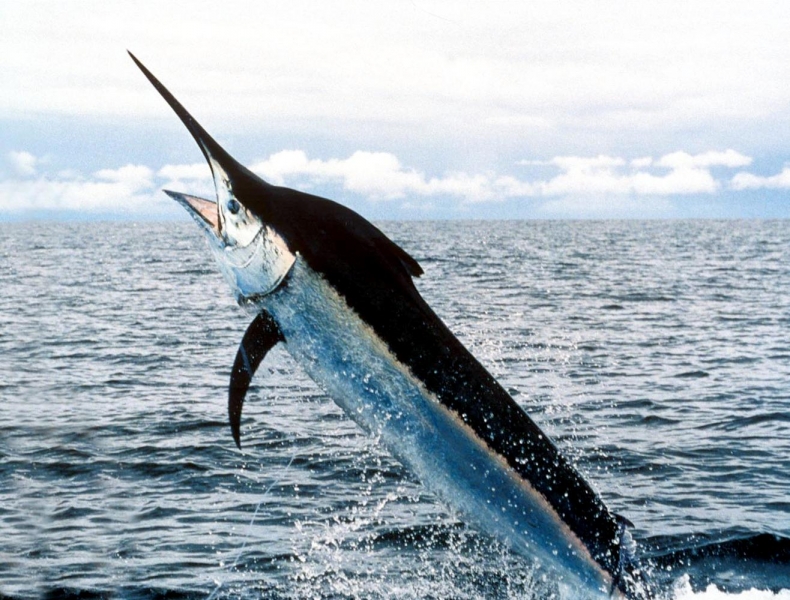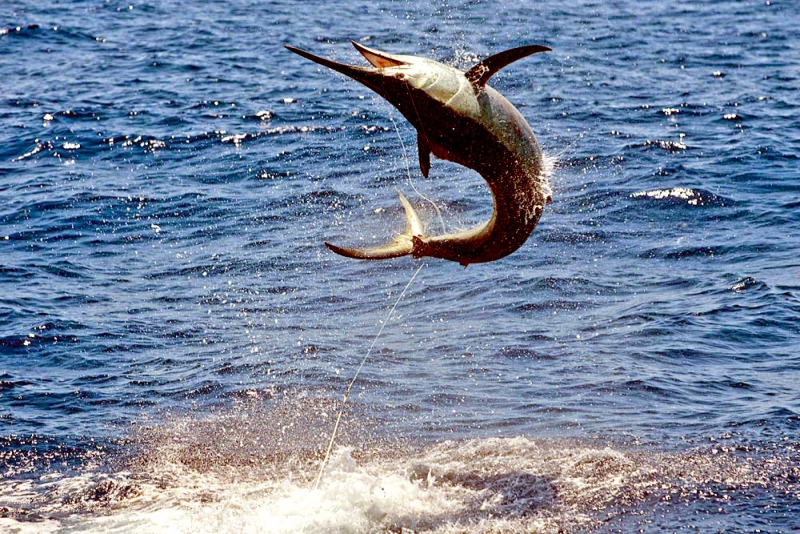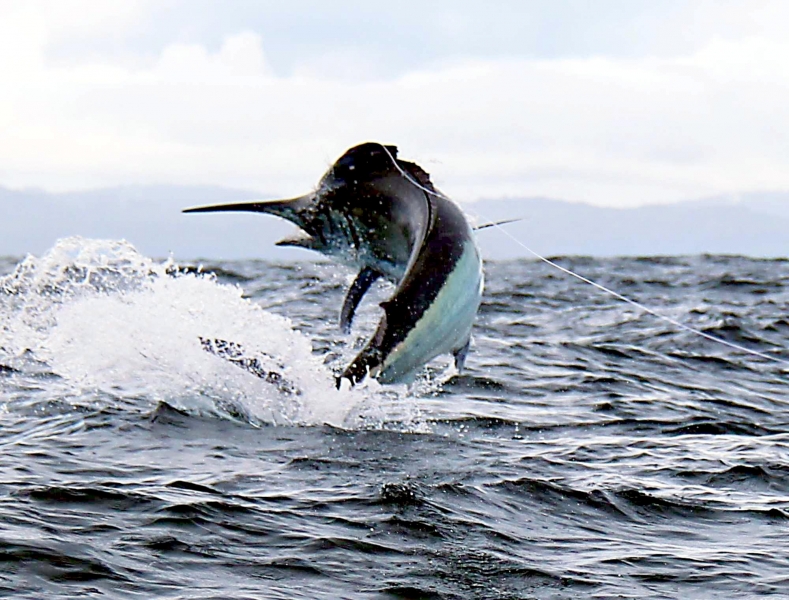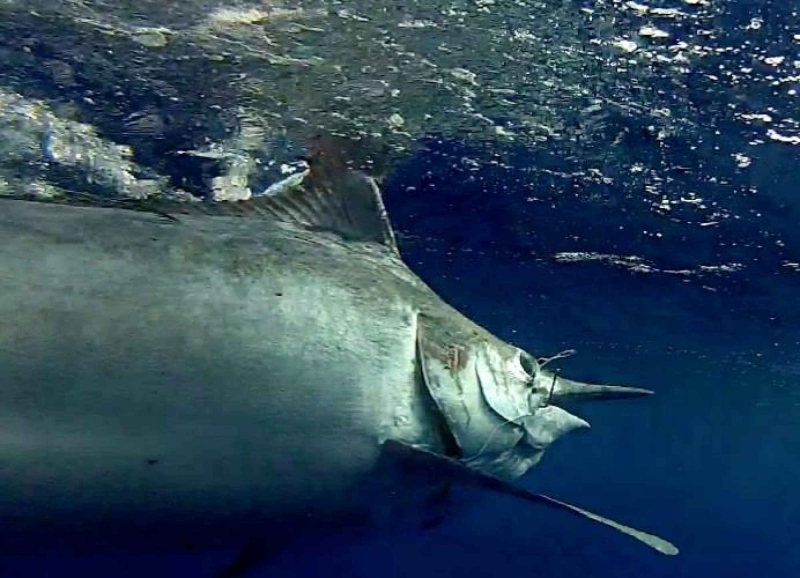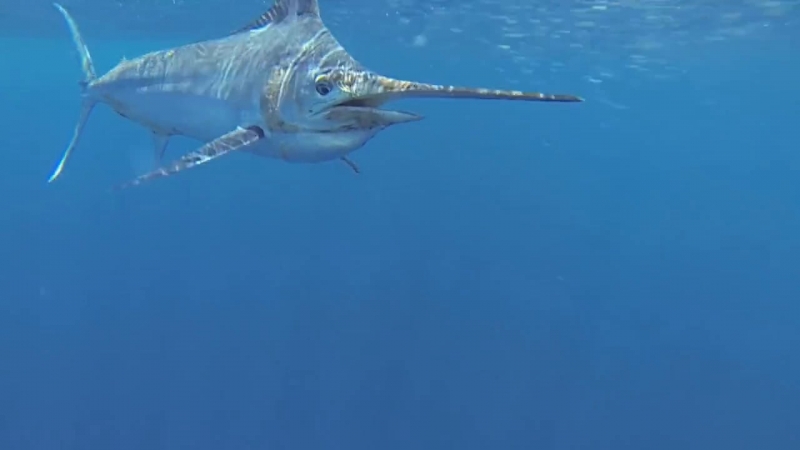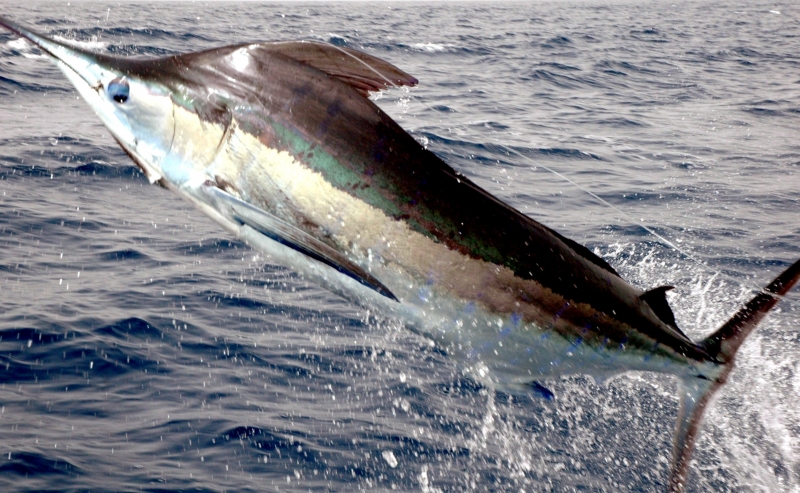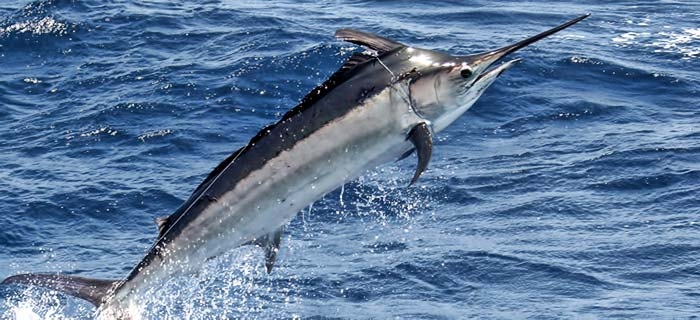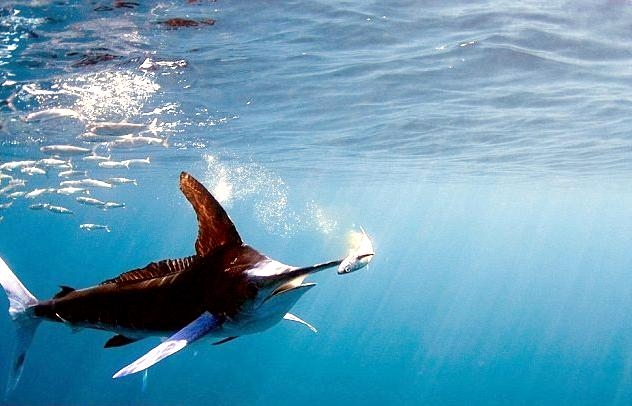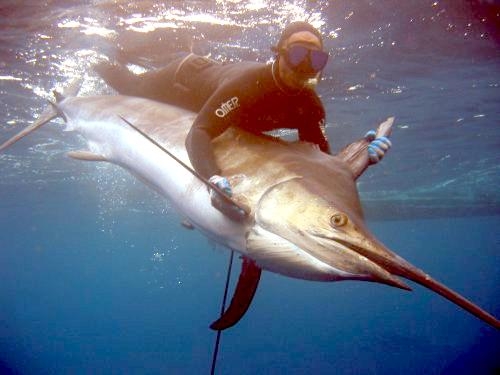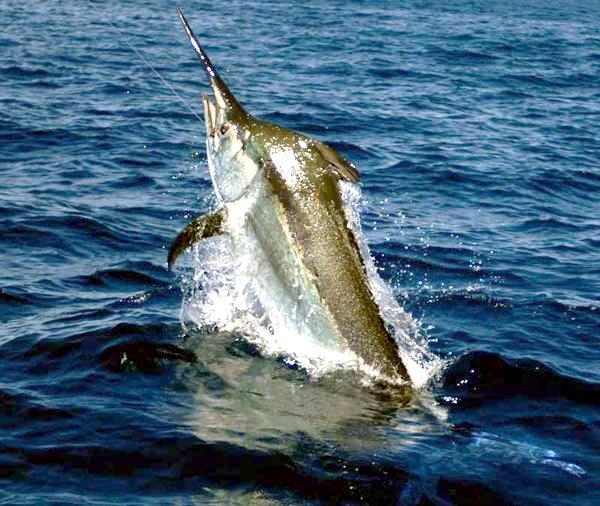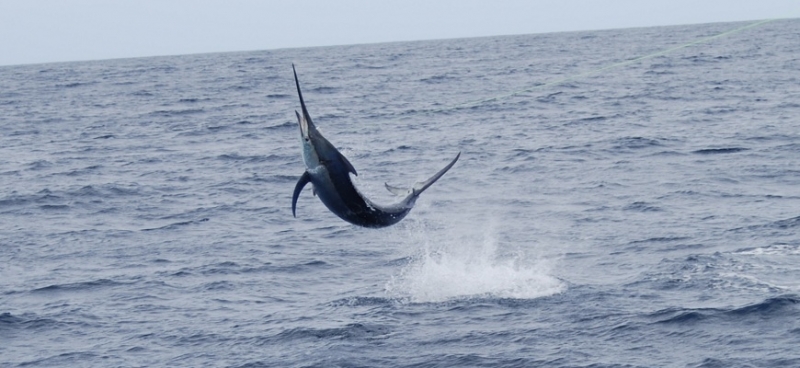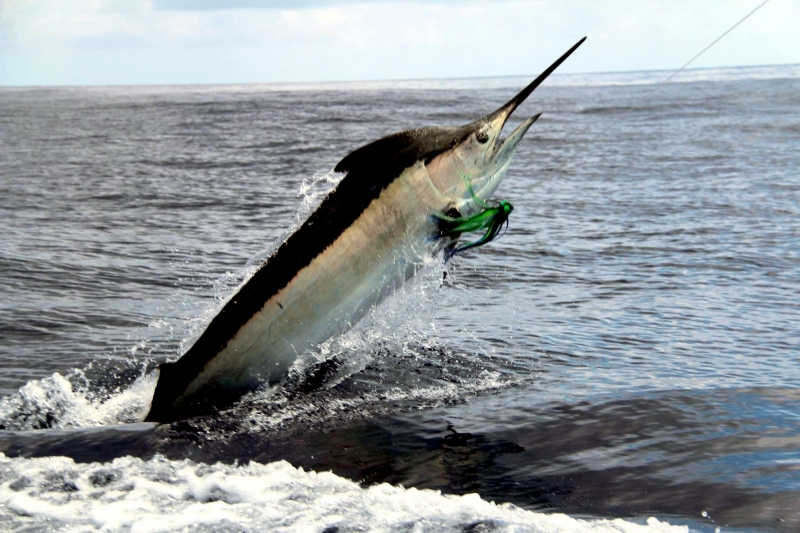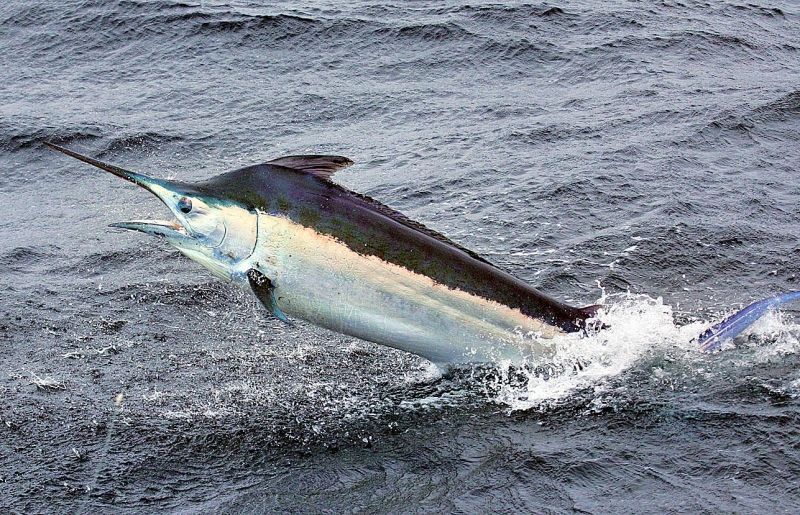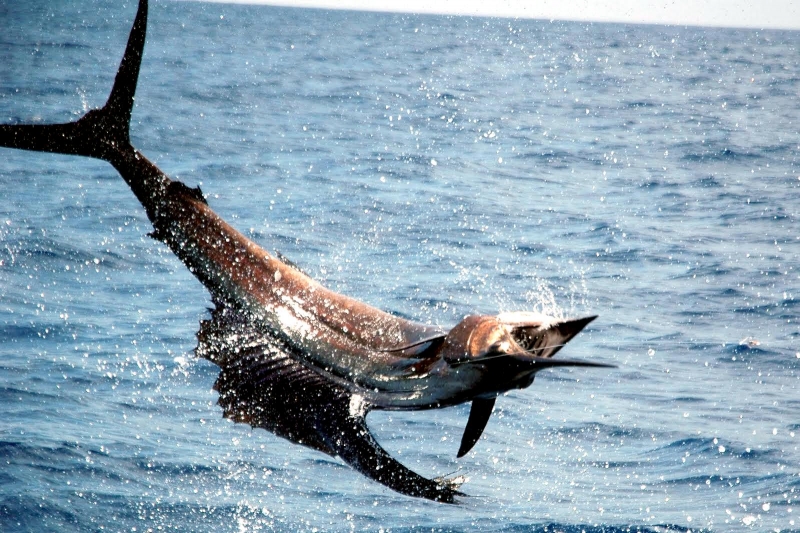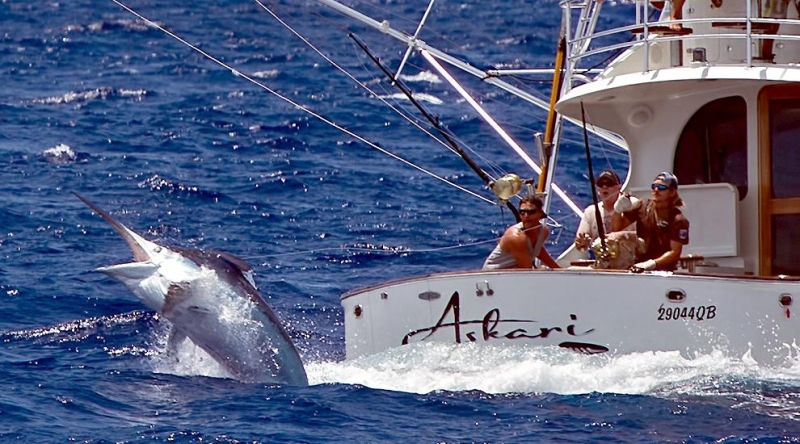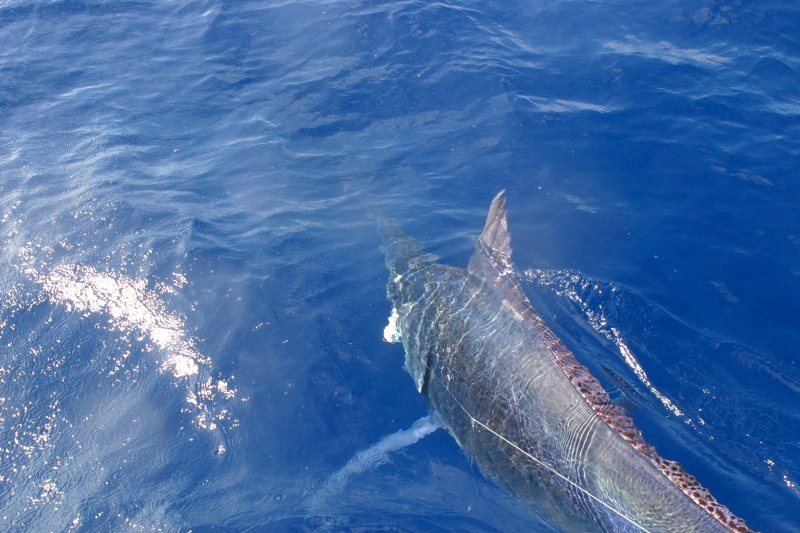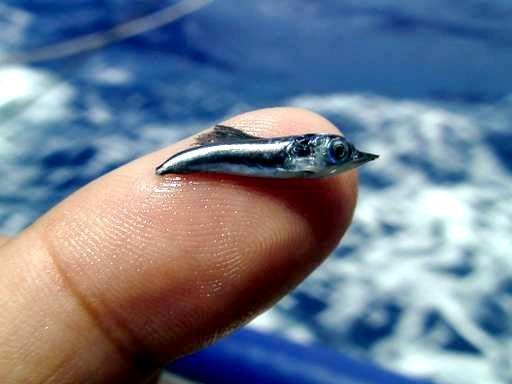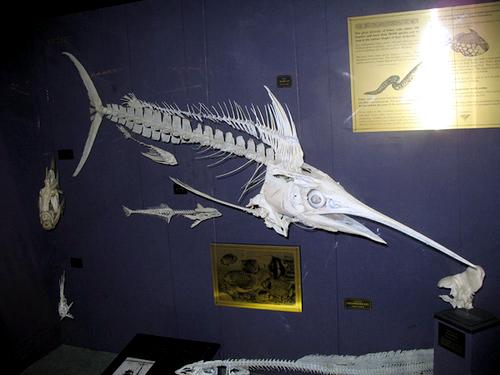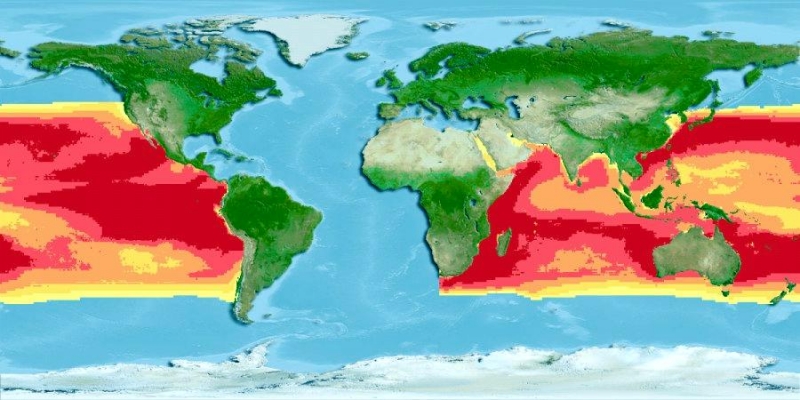“Makaira indica”
The Black Marlin is found in the tropical Indo-Pacific oceans and an extraordinary trophy for any angler. Known as the “Pearl of the Ocean”, the Black Marlin is a much sought after game fish. It is a strong, fast pelagic species highly prized by sport fishermen. Elegant, strong and with a great deal of stamina, the Black Marlin offers an unforgettable fight. The Black Marlin is a species of marlin found in tropical and subtropical Indo-Pacific oceans. It will often be found close to the surface. It is one of the largest marlins and bony fish and is one of the fastest fish on earth reaching speeds up to 80 mph (128 kmh). The Black Marlin has a dark blue dorsal side, a silvery white belly and faint blue vertical stripes running down the sides. The first dorsal fin is blackish to dark blue, while the other fins are dark brown, sporadically with blue tinges. A specimen may have anywhere between 39 and 50 dorsal soft rays. Males may reach a length of 4.65 meters and a weight of 750 kilograms, females are generally much larger. Black Marlin grow very rapidly. Juveniles reach around 15 kilograms in their first year, 50 kilograms in their third year and given sufficient food supply, a “grander” female Black Marlin around 450 kilograms (1,000 pounds) is possibly as little as 10-12 years old. Males and females are indistinguishable externally, but females attain a much larger size with males seldom growing more than 2.7 meters long and 200 kilograms. Black Marlins do not change sex like some other fishes, but sex ratios vary with area and season suggesting that movements of male and female Black Marlins may differ. Age at first maturity is not known exactly, but from Taiwanese data the length of males at first maturity is around 140 centimeters (approximately 2 years old), for females around 230 centimeters (4-5 years old).
Known spawning areas for Black Marlin based on the presence of larvae and juveniles, are restricted to warmer tropical areas when water temperatures are around 27-28 °C. Spawning occurs at specific times in specific regions in the western North Pacific, in the Indian Ocean on the northwest shelf off Exmouth and most famously, in the Coral Sea off the Great Barrier Reef near Cairns during October & November. Here suspected pre-spawning behavior has been observed with “grander” females being closely followed by several smaller male fish. Egg counts from ripe female Black Marlin can exceed 40 million per fish. The Black Marlin is the only marlin with non-retractable fins. Like all billfish, the species has a distinctive stretched out sword-like upper jaw. Its dorsal fin is proportionately the lowest of any billfish, standing less than 50% of the Black Marlin’s body height. Scientists are yet to determine how long a member of this species lives. Despite their oceanic environment, large Black Marlins can sometimes be encountered very close to land, particularly near offshore islands & coral reefs, while juveniles commonly range closer inshore and can even be caught by land-based game anglers at specific locations when conditions are right. Like other billfish, Black Marlins are apex predators that feed mostly on small tunas, but also other fishes, squids, cuttlefishes, octopods and even large crustaceans. What is defined as “smaller fish” is relative, especially when you consider that large Black Marlins over 500 kilograms have been found with tuna over 50 kilograms in their stomachs. Research off Australia’s east coast suggests that catch-ability of a Black Marlin increases around the full moon and the week afterwards as its prey species move deeper out of the surface layers, forcing the Black Marlin to forage over a wider area.


